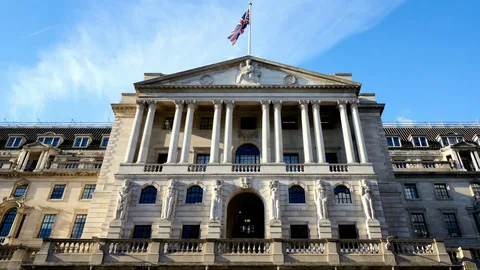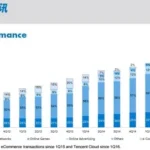Bank of England has stepped up its efforts to counter risk from leveraged trading in the UK bond market, particularly in the wake of the costly 2022 gilt crisis. Targeting systemic weaknesses, the Bank of England seeks to better make the gilt market resilient and avoid destabilizing fire-sale episodes. Bank of England‘s move to consult with financial market stakeholders represents a tactical effort to enhance transparency and monitoring of leveraged trades.
In a focus on financial security, the BOE will reform measures that can reform the UK gilt market and the environment in which it operates. Leveraged transactions, especially via LDI mechanisms, have raised red flags, and the Bank of England will do its best to close loopholes that could trigger financial contagion. The Bank of England suggests mandatory central clearing and buffers for liquidity, both crucial to ensuring market resilience. These moves position the BOE as a central force in transforming how the UK bond market operates under stress.
Through this discussion and reform initiative, the BOE signals that market complacency around leverage and liquidity must end. The Bank of England recognizes the importance of global cooperation and will align some strategies with developments in the US and EU. With the financial landscape changing, the Bank of England attempts to future-proof the financial system. The BOE will weigh innovation against regulation to protect the market from similar crises. Ultimately, the Bank of England’s strategy is not only responsive but forward-looking, getting the UK bond market ready for better days to come.
Read More: Toyota bZs Redefined: 2026 Electric SUV Breaks All Expectations
2022 Gilt Crisis: A Wake-Up Call for the UK Bond Market
The 2022 gilt crisis served as an economic alarm bell, rattling the foundations of the UK government bond market. Leveraged LDI funds, when taken by surprise by plummeting gilt prices, were compelled into frantic asset sales. These fire-sale dynamics got out of hand, leaving the Bank of England to step in with a £19.3 billion bailout bond-buying scheme.
This dramatic action by the BOE was necessary to prevent contagion within wider markets. In the aftermath of the crisis, the BOE required LDI funds to build up their liquidity buffers, resulting in more than £40 billion of new capital being raised. LDI funds are now less likely to instigate destabilizing events with higher buffers, and this is a priority for the Bank of England in terms of financial resilience.
Proposed Regulatory Changes: Central Clearing & Haircut Regulations
In order to reduce systemic risk, the Bank of England is considering reforms regarding gilt repos, specifically by advocating for greater central clearing. Central clearing through CCPs (Central Counterparties) can significantly lower counterparty default risk—a key issue during turbulent times. Another reform the Bank of England is contemplating is the imposition of minimum haircuts on non-cleared repos. These regulations will discourage leverage to some extent and introduce greater stability in the trading environment. A Bank of England discussion paper will come out shortly, seeking views from market participants. Even though central clearing has picked up pace in the US, the Bank of England realizes that UK-specific issues such as legal and cost considerations need to be handled delicately.
Enhancing Liquidity: New Repo Facility for Non-Banks
In an effort to provide support for liquidity during crises, the Bank of England introduced a new repo facility in January 2025. The facility provides non-bank institutions such as insurers, LDI funds, and pension schemes with emergency liquidity through gilts collateral. The Bank of England introduced the facility with the aim of dealing with withdrawal of dealer support in stressed markets. Recent BOE stress tests revealed dealers stepping back from repos would strangle market financing—identifying a key vulnerability. By providing a centralised source of funding, the Bank of England is protecting the market’s operation when it is most needed. This forward-thinking action demonstrates the Bank of England’s long-term dedication to a safe and effective gilt market.
The Road Ahead: Industry Input & International Alignment
In preparing its discussion paper, the BOE is going the consultative route—market participants, investors, and regulators are being included. The reaction in industry is mixed: although some welcome the direction, there are others concerned about the compliance costs and the liquidity implications. The Bank of England is cautious not to dictate a one-size-fits-all solution. What it might opt for instead could be phased rollouts and incentives rather than mandates. The BOE is also carefully watching US and EU regulatory steps, potentially aligning its frameworks to remain competitive on the global stage. Although challenges exist, the Bank of England’s aim is evident—to ensure market integrity and prevent another crisis stemming from unfettered leverage.
With the UK financial system continuing to evolve, the BOE’s steadfast commitment to transparency, resilience, and the health of the markets will steer the gilt market towards a more stable, secure future.
For More Trending Business News, Follow Us 10xtimes News






